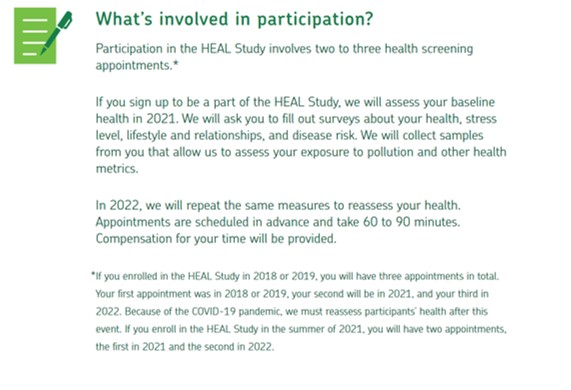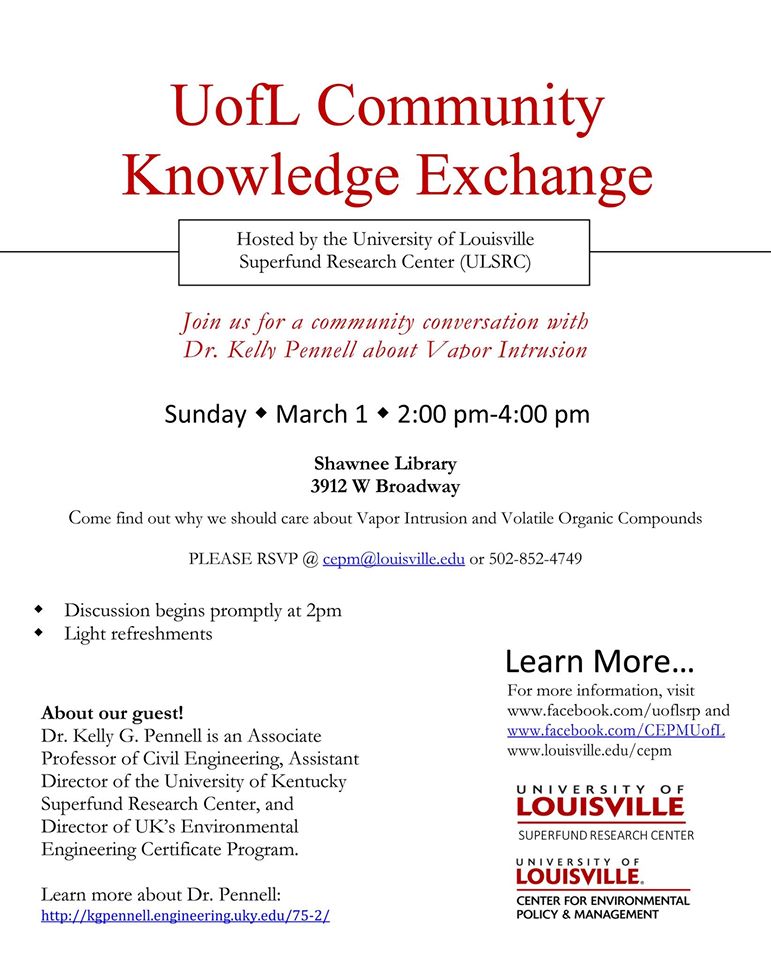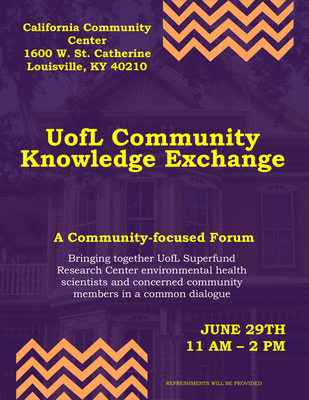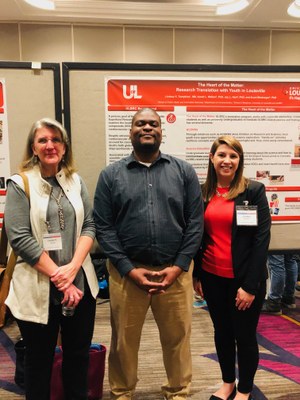Past Center News and Events
Superfund Project 1/HEAL Study Enrolls Participants to study Cardiometabolic effects of VOC exposure
The Christina Lee Brown Envirome Institute conducts the Co-Immunity Project to monitor infection rates COVID-19 in the Louisville Metro area.
The Co-Immunity Project involves testing a representative sample of the Louisville Metro Area/Jefferson County residents to discover the true prevalence of COVID-19 infection, as well as to learn how many people may have had the virus previously. Both the nasal swab test to detect an active infection and the finger-stick blood test to detect antibodies to the virus, indicating a past infection, is administered to particpants. This is done in conjuction with the University of Louisville's and the Center for Predictive Medicine. For more information please see this link: https://louisville.edu/envirome/thecoimmunityproject
UofL Superfund researchers show an association between residential greenness and VOC exposure
Association between residential greenness and exposure to volatile organic compounds
Ray Yeager, Daniel Riggs, Natasha DeJarnett, Schweta Srivastava, Pawel Lorkiewicz, Zhengzhi Xie, Tatiana Krivokhizhina, Rachel Keith, Sanjay Srivastava, Mathew H.E.M. Browning, Nagma Zafar, Sathya Krishnasamy, Andrew DeFilippis, Jay Turner, Shesh Rai, Aruni Bhatnagar
Abstract:Residential proximity to vegetation and plants is associated with many health benefits, including reduced risk of cardiovascular disease, diabetes and mental stress. Although the mechanisms by which proximity to greenness affects health remain unclear, plants have been shown to remove particulate air pollution. However, the association between residential-area vegetation and exposure to volatile organic chemicals (VOCs) has not been investigated. We recruited a cohort of 213 non-smoking individuals and estimated peak, cumulative, and contemporaneous greenery using satellite-derived normalized difference vegetation index (NDVI) near their residence. We found that the urinary metabolites of exposure to VOCs - acrolein, acrylamide, acrylonitrile, benzene, 1-bromopropane, propylene oxide were inversely associated (7–31% lower) with 0.1 higher peak NDVI values within 100 m radius of the participants’ home. These associations were significant at radii ranging from 25 to 300 m. Strongest associations were observed within a 200 m radius, where VOC metabolites were 22% lower per 0.1 unit higher NDVI. Of the 18 measured urinary metabolites, 7 were positively associated with variation of greenness within a 200 m radius of homes. The percent of tree canopy and street trees around participants’ residence were less strongly associated with metabolite levels. The associations between urinary VOC metabolites and residential NDVI values were stronger in winter than in summer, and in participants who were more educated, White, and those who lived close to areas of high traffic. These findings suggest high levels of residential greenness are associated with lower VOC exposure, particularly in winter.
The NIEHS-funded Green Heart Project is featured on PBS Newshour.
View the story: Ambitious Louisville study seeks to understand impact of trees on our health
Led by UofL SRC's Deputy Director and Research Translation Core leader Aruni Bhatnagar, The University of Louisville Superfund Research Center has launched a new Nature Conservancy- and NIEHS-funded project to study the effect of residential greenness on cardiometabolic health called the Green Heart Project. As part of the project, Nature Conservancy and Trees Louisville will plant around 8,000 trees and shrubs in the University of Louisville Superfund Research Fund’s population based study area to examine the long term effect of residential greenness on decreasing the levels of VOCs and thereby improving cardiometabolic health. Air quality and noise levels of the site will be performed by the University of Louisville Superfund Research Center’s Environmental Science projects. To learn more about the Green Heart Project read the January 2019 NIEHS Environmental Factor article.
UofL SRC researchers co-host the 2019 Superfund Research Program Annual Meeting in Seattle, WA
The research of the University of Louisville Superfund Research Center was well-represented by having 15 posters presented by 9 trainees and 6 faculty members during the Superfund Research Program Annual Meeting November 16th through 18th, 2020 in Seattle, Washington. This meeting was co-hosted by the University of Washington Superfund Research Program and our own UofL SRC. Our Center played a large role in organizing all sessions of the meeting including the scientific, training, research translation/community engagement, and administrative sessions. The UofL SRC helped make the meeting a success by not only partially funding the meeting, but also devising agendas for each session, inviting guest speakers, introducing novel ideas to make the meeting more productive, and arranging poster judging sessions.The overarching goal of the meeting was to highlight multidisciplinary innovation that addresses human and environmental health challenges related to Superfund and other hazardous waste sites which occurs within all of the SRP centers throughout the country. There was a particular emphasis on research driven by early stage investigators and trainees at the meeting.
Center director Sanjay Srivastava gave an opening talk about the work we are doing in our center. PhD candidate and trainee Prasadanie Adhihetty was given the honor of speaking about her progress on Project 3 Development of Ultrasensitive Devices for VOC Measurement. Her talk was entitled, “Development of a Gold Nanoparticles Chemiresistor Microarray for Benzene Sensing.”
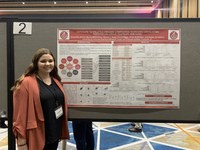
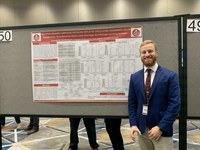
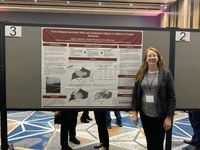
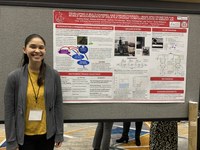
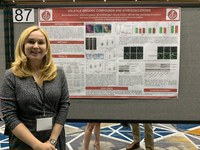
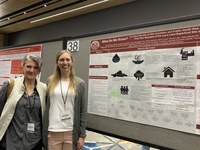
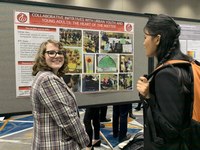
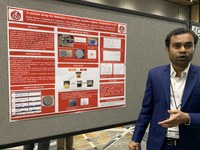
UofL - UK Combined Trainee and Community Outreach Event
The University of Louisville Superfund Research Center (UofL SRC) trainees participated in a unique, multi-center event organized and hosted by the University of Kentucky Superfund Research Center (UK SRC) in Lexington and Whitesburg, KY on July 10-11, 2019. This event consisted of various activities with the overall objective being to foster research collaborations between the two Centers and focus on working together to better address environmental concerns in the State of Kentucky.
On July 10th, UK trainees took UofL trainees on a lab tour and visited numerous labs at the UK campus that are currently involved with different Superfund projects; this was followed by an interactive session among the trainees and PIs where UK and UofL trainees gave presentations on their respective projects. This allowed both Centers to learn about each other’s research goals and progress, as well as stimulate discussions for collaborative work. UofL presenters included graduate trainees Katlyn McGraw, Pradeep Prathibha, Stacey Konkle and Sarah Shrader. Other UofL attendees included trainee leaders, Dr. Marina Malovichko and Dr. Banrida Wahlang, and UofL SRC Training Core Director, Dr. David Hein.
On July 11th, the trainees from both Centers drove to Whitesburg, KY, a place where the UK SRC Community Engagement Core (CEC) has worked for many years, for a full day of community outreach activities. The day started with trainees arriving at the Community Agricultural Nutritional Enterprises Inc. CANE Kitchen for lunch with kids from the Headwaters on the Creek Camp, followed by activities at the Cowan Community Center and Appalshop. The trainees also toured the Whitesburg downtown area, joined community residents for dinner at CANE Kitchen, shopped at the Letcher County Farmer’s Market and attended the Levitt AMP Whitesburg Music Series. UofL trainees expressed how this event was eye-opening to them in terms of building relationships between researchers and community members as well as how they are able to visualize the interconnectedness between their scientific research and health goals in the community.
The UofL SRC would like to thank the UK SRC for their hospitality, and key members who were instrumental in successfully organizing the event, including Dr. Bernhard Hennig (Director, UK SRC), Dr. Zach Hilt (Leader of the UK SRC’s Training Core), Molly Frazar (Graduate Trainee), Dr. Kelly Pennell, (Assistant Director, UK SRC), Dr. Dawn Brewer (Leader, UK SRC CEC), Annie Koempel (Program Manager, UK SRC CEC), as well as Whitesburg Community Leader Valerie Horn and Herb E. Smith (Appalshop).
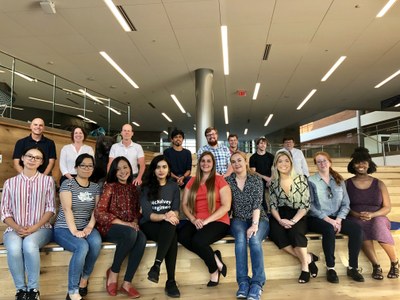
University of Louisville researchers show that chronic exposure to benzene causes insulin resistance in mice
Benzene exposure induces insulin resistance in mice
Abstract
Benzene is a ubiquitous pollutant associated with hematotoxicity but its metabolic effects are unknown. We sought to determine if and how exposure to volatile benzene impacted glucose handling. We exposed wild type C57BL/6 mice to volatile benzene (50ppm x 6h/d) or HEPA-filtered air for 2 or 6wk and measured indices of oxidative stress, inflammation and insulin signaling. Compared to air controls, we found that mice inhaling benzene demonstrated increased plasma glucose (p = 0.05), insulin (p = 0.03), and HOMA-IR (p = 0.05), establishing a state of insulin and glucose intolerance. Moreover, insulin-stimulated Akt phosphorylation was diminished in the liver (p = 0.001) and skeletal muscle (p = 0.001) of benzene-exposed mice, accompanied by increases in oxidative stress and NF-κB phosphorylation (p = 0.025). Benzene-exposed mice also demonstrated elevated levels of MIP1-α transcripts and SOCS1 (p = 0.001), but lower levels of IRS-2 tyrosine phosphorylation (p = 0.0001). Treatment with the superoxide dismutase mimetic, TEMPOL, reversed benzene-induced effects on oxidative stress, NF-κB phosphorylation, SOCS1 expression, IRS-2 tyrosine phosphorylation, and systemic glucose intolerance. These findings suggest that exposure to benzene induces insulin resistance and that this may be a sensitive indicator of inhaled benzene toxicity. Persistent ambient benzene exposure may be a heretofore unrecognized contributor to the global human epidemics of diabetes and cardiovascular disease. Tox Sci, 2018 (in press)
UofL Superfund Researchers attend the Annual Superfund Research Program Meeting 2018
Many of the University of Louisville Superfund Research Center members attended the Superfund Research Program Annual Meeting in Sacramento, California November 28th-30th. This is always a great opportunity for our center to learn what other researchers from programs all over the country are doing to study the affects of hazardous chemicals found at other Superfund Sites. The Superfund Research Centers at UC Davis, along with UC Berkeley and UC Diego is hosting this meeting. This year's theme was “The Next Generation of Superfund Training, Translation and Research”. "A major objective of the meeting is to highlight innovation occurring within SRP centers to promote environmental health, particularly that being driven by early stage investigators and trainees". For more information about this meeting see the SRP's meeting website
Superfund Research Program Administrator visits the UofL Superfund Research Center
NIEHS Superfund Research Program Administrator Dr. Danielle Carlin visits our Center November 5, 2018.

